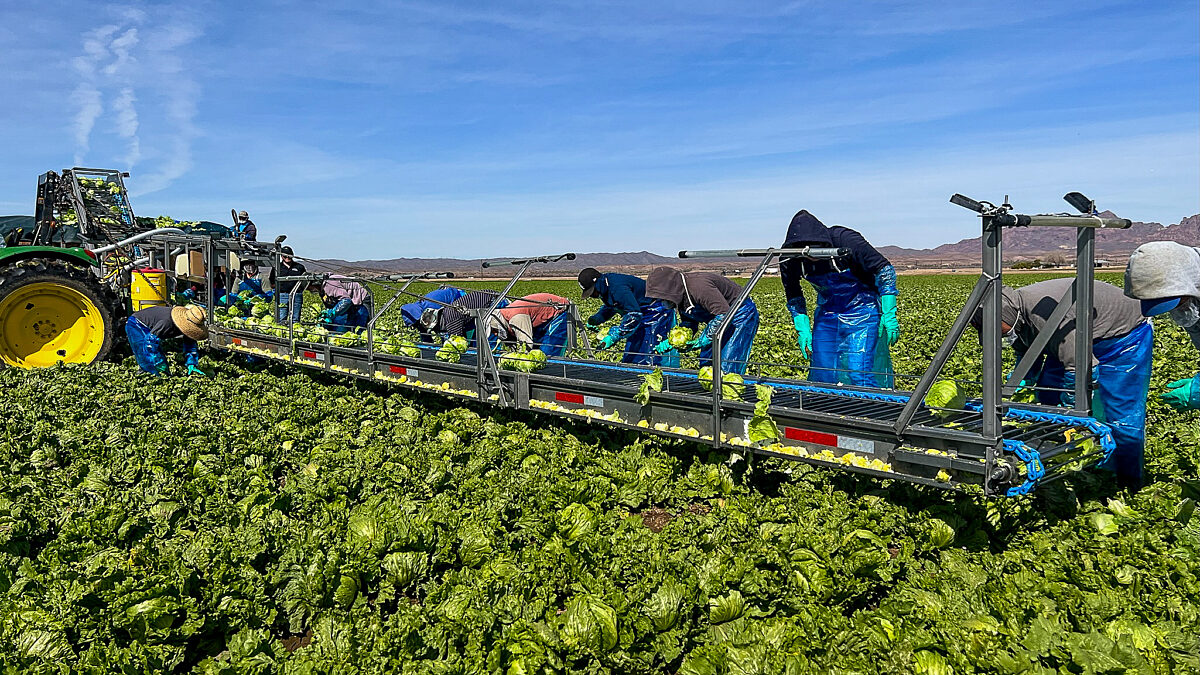For the Love of Labor
Guest Author
Special Contributor to FB.org

photo credit: AFBF Photo, Terri Moore
Guest Author
Special Contributor to FB.org
By Mary Alameda
Over time, the cost of living in the Golden State has increased relentlessly, repercussions for improper documentation have grown more severe, and higher wages in other industries are drawing more workers away from agriculture. Even with the rise in H-2A worker visas in California and across the country, finding willing hands to help plant, tend and harvest crops on America’s farmland is harder with each passing season.
For the first time in my life, I fear the future of agriculture. I fear the fields will go fallow. I fear the corridos will stop playing out of the stereo on the harvester. I fear the lunchtime chatter will go silent. I fear the colorful bandanas and hats shading faces will disappear. I fear my favorite local fruits and vegetables will become a thing of the past. I fear the extinction of the people and industry I fell in love with.
Sadly, California farmers and ranchers cannot sustain the rising costs of farm labor, and many may be forced to cut back production to absorb the cost.
I am often asked why I would choose a career in agriculture. For me the answer has always been easy: I fell in love with the hands and hearts that characterize farming.
My love stems from birth; I am truly a farmer’s daughter. I come from a long line of farmers, fourth generation on both sides of my family. I grew up sitting on my father’s lap, 10 and two on the wheel, waving to every other white pickup truck we passed. I trailed behind his footsteps struggling to keep up with his long stride through furrows. I practiced rolling R’s with foremen. As I got older, I put my own hands to work, only to learn they didn’t stand a chance. I was left in the dust of hoeing and thinning crews. I laughed with the ladies sorting green beans, providing comic relief as the guera, blondie, trying to keep up.
In the midst of our peak season, my fears for agriculture are being realized more rapidly than anticipated. Due to challenging immigration laws and a rising minimum wage, the California farmer cannot find hands, let alone pay them. By 2023, the minimum wage will be $15.00 per hour statewide. With that, the designated work hours and days in a week have also been revised. An employee can only work six days a week at eight hours a day before hitting overtime, with the exemption of irrigators.
A farmer only wishes he or she could feed the world on these hours! Sadly, California farmers and ranchers cannot sustain the rising costs, and many may be forced to cut back production or employ more crews to absorb the cost. Thus, an attempt to bolster farm laborers may have a reverse effect, and result in workers getting fewer hours and making less money than before.
How does a farmer do more with less, or at least keep up? Technology is providing the answer, as the heartbeat of agriculture gets drowned out by the eerie low hum of mechanization.
Many hands to make light work will no longer be needed due to automation. Crews of 20 to 30 workers are now being replaced by one machine. Take for example the Splat 2.0, the Mantis Thinning Rover, operated by one person, can swiftly hoe and thin a field of leafy greens, which once required dozens of workers to tend.
In 2017, we romanticize a picturesque farm-to-fork process during which farmers lovingly handpick fresh produce. While we sporadically appreciate and consistently expect the same quality, most people are unwilling to do the same work. With the current labor situation, we will be abruptly awoken from our farming fantasy. I was once excited to return to the farm I left, but I’m now afraid I won’t recognize it.
Mary Alameda is interning this summer in the American Farm Bureau Federation’s Communications Department. Mary is a senior studying agricultural communications at California Polytechnic State University, San Luis Obispo.
Top Issues
VIEW ALL